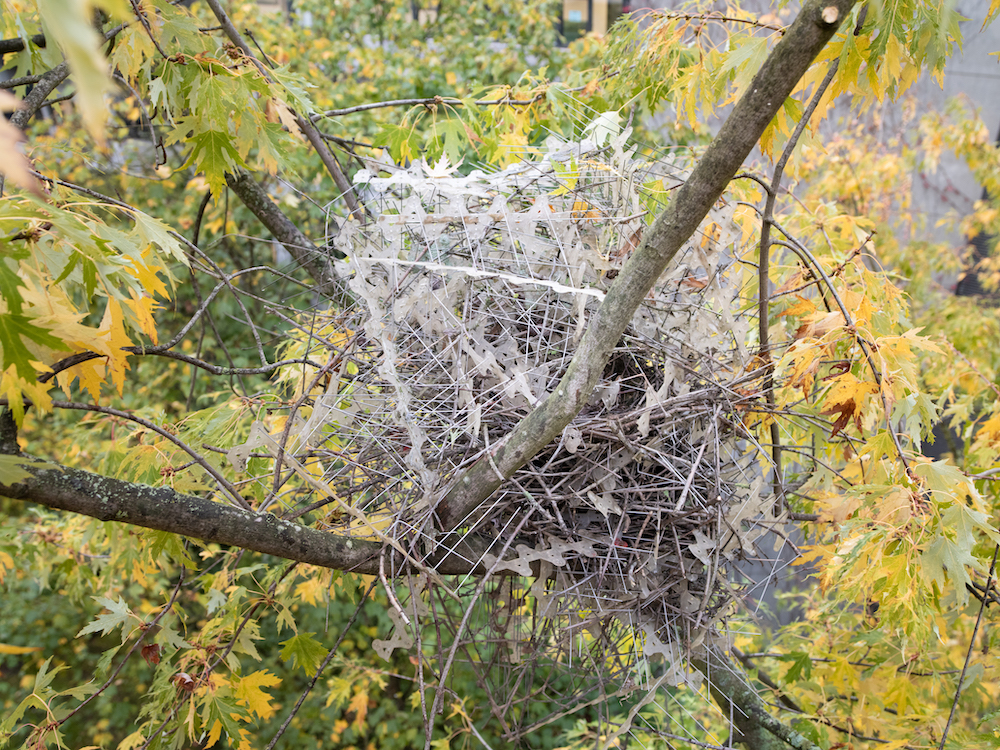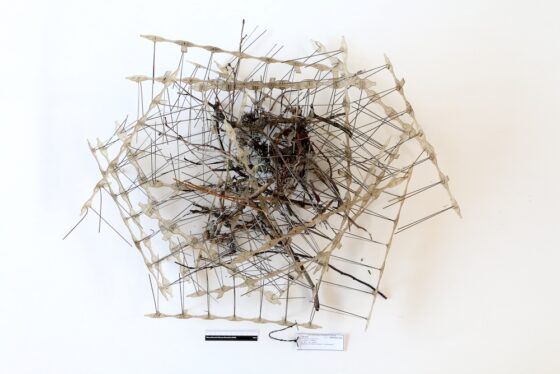The birds spike back, avian architects turn the tables
Brandon Hartley
Magpies and other birds in the Netherlands and elsewhere have begun tearing up anti-bird spike strips typically used to stop pigeons sitting on buildings before adding them to their nests.
‘It’s the ultimate revenge story,’ says Leiden-based biologist Auke-Florian Hiemstra, who has been researching the phenomenon.
Hiemstra, who currently works at Leiden’s Naturalis Biodiversity Center, recently teamed up with researchers at the Natural History Museum in Rotterdam to conduct a study into these unusual nests.
The research began when he was contacted by a patient at a Antwerp hospital in 2021 who said there was an extraordinary magpie nest outside the window of his room.
Hiemstra inspected the nest and discovered it was defended by anti-bird strips containing around 1,500 sharp metal spikes.
“Magpies always look for spiky material for their nests,” he told Dutch News. “Normally, they look for spiky branches or other natural materials. In the cities, there isn’t much spiky vegetation, but there’s a great alternative and it’s these bird spikes.”
Hiemstra had to wait until after breeding season the following October to remove the nest before later adding it to the permanent collection at Naturalis. It can now be viewed by visitors in the museum’s Life Science section.
But that nest inspired Hiemstra and his colleagues to go in search of similar ones. They were able to identify others in Glasgow, Enschede, and in a tree near Rotterdam’s Centraal built by crows.

Birds beyond Europe have also been using spiky materials in their nests in recent years. The Kansas Barbed Wire Museum has one made out of barbed wire and Melbourne’s indomitable ‘Parkdale Pigeon’ made headlines several years ago when it figured out how to use the spikes to secure its nest. One magpie even resorted to nabbing knitting needles.
“Imagine a magpie searching for something spiky and then finding knitting needles just laying around,” Hiemstra said. “For them, that’s like hitting the jackpot.”
The sharp materials help the birds protect their nests, but they’re also smart enough to keep them on the exterior.
“The nests look very harsh from the outside, but in the middle, it’s how you would imagine a nest with soft material,” Hiemstra said. ”The eggs and the young ones are in a very comfy bed of soft materials like leaves and other stuff. They’re not sitting on the needles. That would be a frightening situation!”
Hiemstra previously hit the headlines in 2021 when he co-authored research about a fish getting stuck in a disposable glove in a Leiden canal as part of a study into coronavirus-related litter.
Thank you for donating to DutchNews.nl.
We could not provide the Dutch News service, and keep it free of charge, without the generous support of our readers. Your donations allow us to report on issues you tell us matter, and provide you with a summary of the most important Dutch news each day.
Make a donation